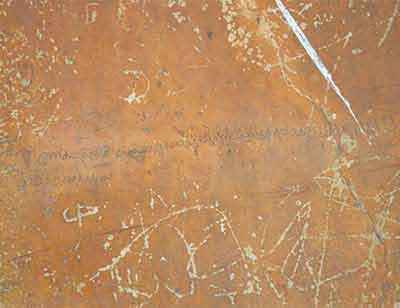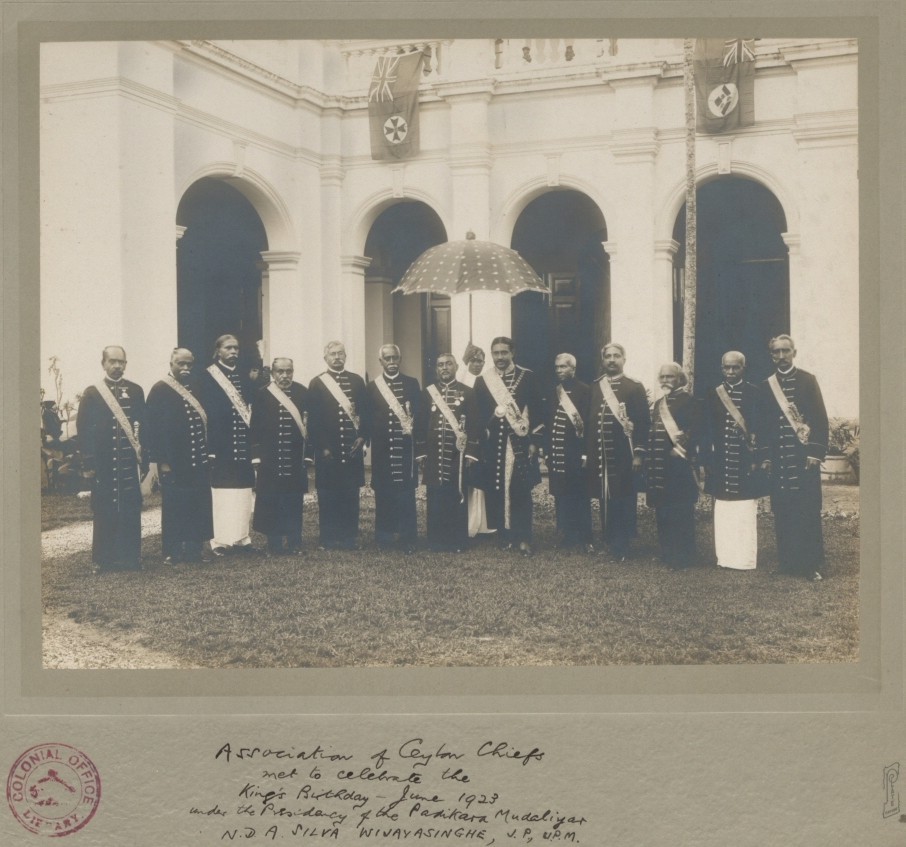|
Sinhalization
Sinhalisation is a term derived from Sinhala that has a number of meanings in Sri Lanka. It mainly refers to the assimilation into Sinhalese culture in which the members of another ethno-cultural group are steadily integrated or absorbed into established Sinhalese culture. Sociological assimilation In a sociological context it could refer to the assimilation of ethno-cultural minorities in Sri Lanka such as the Sri Lankan Tamils, Chetties, and indigenous Veddas into the majority Sinhalese identity, including some Sinhala Buddhists of the interior such as the Demalagattara and some Catholics such as the Bharatha of the coastal areas of the island nation. Many noted elite families that had contributed to Sinhala nationalism had been of Tamil origin, themselves Sinhalised in the recent past. Politics and government In a political context it could refer to the Sinhala language-favouring policies of the post colonial governments of Sri Lanka that are considered to be major ca ... [...More Info...] [...Related Items...] OR: [Wikipedia] [Google] [Baidu] |
Demalagattara
Demalagattara ({{lit Tamil serf) are a social group or caste amongst the Sinhalese of Sri Lanka. Demalagattara are mostly Theravada Buddhists by religion. They are generally considered Sinhalese but proclaim their Tamil ethnic origins, whereas all other South India-derived castes such as Karave, Salagama, Durave and Berava do not emphasise their Tamil links as part of their assimilation into Sinhalese society. Origins As the mainstream Sinhalese speakers claim North Indian ethnic origins the presence of many South Indian type Jatis like the Demalagatara indicate a complex migration history from India to Sri Lanka. Demalagatara do not indicate any tribal origins like the other, formerly untouchable, caste of Rodiyas. Their place in the caste structure is related to a primary function associated with formerly martial origins. They were classed as a sub-caste of the Govigama during the British period. Many are agriculturalists and workers throughout the country. South Indian ... [...More Info...] [...Related Items...] OR: [Wikipedia] [Google] [Baidu] |
Sinhala Language
Sinhala ( ; Sinhala: , , ), sometimes called Sinhalese ( ), is an Indo-Aryan language primarily spoken by the Sinhalese people of Sri Lanka, who make up the largest ethnic group on the island, numbering about 16 million. It is also the first language of about 2 million other Sri Lankans, as of 2001. It is written in the Sinhalese script, a Brahmic script closely related to the Grantha script of South India. The language has two main varieties, written and spoken, and is a notable example of the linguistic phenomenon known as diglossia. Sinhala is one of the official and national languages of Sri Lanka. Along with Pali, it played a major role in the development of Theravada Buddhist literature. Early forms of the Sinhalese language are attested to as early as the 3rd century BCE. The language of these inscriptions, still retaining long vowels and aspirated consonants, is a Prakrit similar to Magadhi, a regional associate of the Middle-Indian Prakrits that had been ... [...More Info...] [...Related Items...] OR: [Wikipedia] [Google] [Baidu] |
Sri Lankan Tamil Culture
Shri (; , ) is a Sanskrit term denoting resplendence, wealth and prosperity, primarily used as an honorific. The word is widely used in South and Southeast Asian languages such as Assamese, Meitei ( Manipuri), Marathi, Malay (including Indonesian and Malaysian), Javanese, Balinese, Sundanese, Sinhalese, Thai, Tamil, Telugu, Odia, Assamese, Punjabi, Hindi, Bengali, Nepali, Malayalam, Kannada, Sanskrit, Pali, Khmer, and also among Philippine languages. It is usually transliterated as ''Sri'', ''Sree'', ''Shri'', ''Shiri'', ''Shree'', ''Si'', or ''Seri'' based on the local convention for transliteration. In Tamil it evolved to Tiru. The term is used in Indian subcontinent and Southeast Asia as a polite form of address equivalent to the English "Mr." in written and spoken language. "Shri" is also used as a title of veneration for deities or as honorific title for individuals. "Shri" is also an epithet for Hindu goddess Lakshmi, while a ''yantra'' or a mystical dia ... [...More Info...] [...Related Items...] OR: [Wikipedia] [Google] [Baidu] |
Cultural Assimilation
Cultural assimilation is the process in which a minority group or culture comes to resemble a society's Dominant culture, majority group or fully adopts the values, behaviors, and beliefs of another group. The melting pot model is based on this concept. A related term is cultural integration, which describes the process of becoming economically and socially integrated into another society while retaining elements of one’s original culture. This approach is also known as cultural pluralism, and it forms the basis of a cultural mosaic model that upholds the preservation of cultural rights. Another closely related concept is acculturation, which occurs through cultural diffusion and involves changes in the cultural patterns of one or both groups, while still maintaining distinct characteristics. There are various types of cultural assimilation, including full assimilation and forced assimilation. Full assimilation is common, as it occurs spontaneously. Assimilation can also invol ... [...More Info...] [...Related Items...] OR: [Wikipedia] [Google] [Baidu] |
Kandyan Convention
In the history of Sri Lanka, the Kandyan Convention () was a treaty signed on 2 March 1815 between the British governor of Ceylon, Sir Robert Brownrigg, and the chiefs of the Kandyan Kingdom, British Ceylon, whereas, according to the Sinhala version of the Convention, the signatories were the chiefs of Sihale , for the deposition of King Sri Vikrama Rajasinha and ceding of the kingdom's territory to the British Crown. It was signed in the Magul Maduwa (Royal Audience Hall) of the Royal Palace of Kandy. Background The king, of South Indian ancestry, faced powerful opposition from the Sinhalese chieftains who sought to limit his power. A successful coup was organized by the chieftains, ending 2358 years of self-rule on the island and resulting in the imprisonment of the king in Vellore. The treaty is unique in that it was not signed by the monarch on the throne but by members of his court and other dignitaries of the kingdom. The convention gained a degree of infamy when, ... [...More Info...] [...Related Items...] OR: [Wikipedia] [Google] [Baidu] |
Negombo Tamils
Negombo Tamils or Puttalam Tamils are the Tamil speaking ethnic Karavas who live in the western Gampaha and Puttalam districts of Sri Lanka. They are distinguished from other Tamils from the island nation by their unique dialects, one of which is known as Negombo Tamil dialect. Other sub categories of native Tamils of Sri Lanka are Jaffna Tamils or Northern Tamils and Batticalao Tamils or Eastern Tamils from the traditional Tamil dominant North and East of the Island nation. Negombo is a principal coastal city in the Gampaha District and Puttalam is also the principal city within the neighbouring Puttalam District.Contact-Induced Morphosyntactic Realignment in Negombo Fishermen’s Tamil By Bonta Stevens, South Asian Language Analysis Roundtable XXIII (October 12, 2003) The Unive ... [...More Info...] [...Related Items...] OR: [Wikipedia] [Google] [Baidu] |
Bharatakula
Bharatha People (, ) also known as Bharatakula and Paravar, is an ethnicity in the island of Sri Lanka. Earlier considered a caste of the Sri Lankan Tamils, they were classified as separate ethnic group in the 2001 census. They are descendant of Tamil speaking Paravar of Southern India who migrated to Sri Lanka under Portuguese rule. They live mainly on the western coast of Sri Lanka and mainly found in the cities of Mannar, Negombo and Colombo. Etymology Scholars derive ''Bharatha'', also pronounced as ''Parathar'', from the Tamil root word ''para'' meaning "expanse" or "sea". The word has been documented in ancient Sangam literature, describing them as maritime people of the ''Neithal'' Sangam landscape''.'' Colonial archives refer them as ''Paruwa'', a corrupted form of "Paravar". According to other scholars is ''Bharatha'' a name the community took from the Hindu epic Mahabharata, the clan of Bhāratas, who were the ancestor of the heroes in the epic, following their ori ... [...More Info...] [...Related Items...] OR: [Wikipedia] [Google] [Baidu] |
Sri Lankan Mudaliyars
Mudaliyar (or Mudali) was a Ceylonese colonial title during Portuguese and British rule of the island. Stemming from the native headman system, the title was usually hereditary, made to wealthy influential families loyal to the British Crown. First used by Sinhalese kings and reigning princes from the Polonnaruwa period forward to ennoble subjects, the Portuguese from 17th century onwards, followed by the Dutch and British continued use of the Mudaliyar title. The British use differed slightly in that they re-established a Mudaliyar class, at the behest of the Governor of Ceylon, with appointments that had the title of Mudali. This process was stopped in the 1930s when the Native Department of the British government of Ceylon was closed down. The members of this group formed a unique social group called the Sri Lankan Mudaliyars and associated with older Radala caste. At present, the post of Court Mudliar remain in function in Sri Lankan courts. History Mudaliyar is a Tam ... [...More Info...] [...Related Items...] OR: [Wikipedia] [Google] [Baidu] |
Buddhist
Buddhism, also known as Buddhadharma and Dharmavinaya, is an Indian religion and List of philosophies, philosophical tradition based on Pre-sectarian Buddhism, teachings attributed to the Buddha, a wandering teacher who lived in the 6th or 5th century Before the Common Era, BCE. It is the Major religious groups, world's fourth-largest religion, with about 500 million followers, known as Buddhists, who comprise four percent of the global population. It arose in the eastern Gangetic plain as a movement in the 5th century BCE, and gradually spread throughout much of Asia. Buddhism has subsequently played a major role in Asian culture and spirituality, eventually spreading to Western world, the West in the 20th century. According to tradition, the Buddha instructed his followers in a path of bhavana, development which leads to Enlightenment in Buddhism, awakening and moksha, full liberation from ''Duḥkha, dukkha'' (). He regarded this path as a Middle Way between extremes su ... [...More Info...] [...Related Items...] OR: [Wikipedia] [Google] [Baidu] |
Sinhalese People
The Sinhalese people (), also known as the Sinhalese or Sinhala people, are an Indo-Aryan peoples, Indo-Aryan ethno-linguistic group native to the island of Sri Lanka. They are the largest ethnic group in Sri Lanka, constituting about 75% of the Sri Lankan population and number more than 15.2 million. The Sinhalese people speak Sinhala language, Sinhala, an insular Indo-Aryan languages, Indo-Aryan language. Sinhalese people are predominantly Theravada Buddhists, although a significant minority of Sinhalese follow branches of Christianity in Sri Lanka, Christianity and Religion in Sri Lanka, other religions. Since 1815, Sinhalese people were broadly divided into two subgroups: the up-country Sinhalese of the Central province, Sri Lanka, central mountainous regions, and the low-country Sinhalese of the coastal regions. Although both groups speak the same language, they are distinguished as they observe different cultural customs. According to the ''Mahavamsa'', a Pali chronicle ... [...More Info...] [...Related Items...] OR: [Wikipedia] [Google] [Baidu] |
Vijayanagara Empire
The Vijayanagara Empire, also known as the Karnata Kingdom, was a late medieval Hinduism, Hindu empire that ruled much of southern India. It was established in 1336 by the brothers Harihara I and Bukka Raya I of the Sangama dynasty, belonging to the Yadava clan of Lunar dynasty, Chandravamsa lineage. The empire rose to prominence as a culmination of attempts by the southern powers to ward off Muslim invasions of India, Muslim invasions by the end of the 13th century. At its peak in the early 16th century under Krishnadevaraya, it subjugated almost all of Southern India's ruling dynasties and pushed the Deccan sultanates beyond the Tungabhadra River, Tungabhadra-Krishna River, Krishna River doab region, in addition to annexing the Gajapati Empire (Odisha) up to the Krishna River, becoming one of the most prominent states in India. The empire's territory covered most of the lands of the modern-day Indian states of Karnataka, Andhra Pradesh, Tamil Nadu, Kerala, Goa, and some pa ... [...More Info...] [...Related Items...] OR: [Wikipedia] [Google] [Baidu] |





